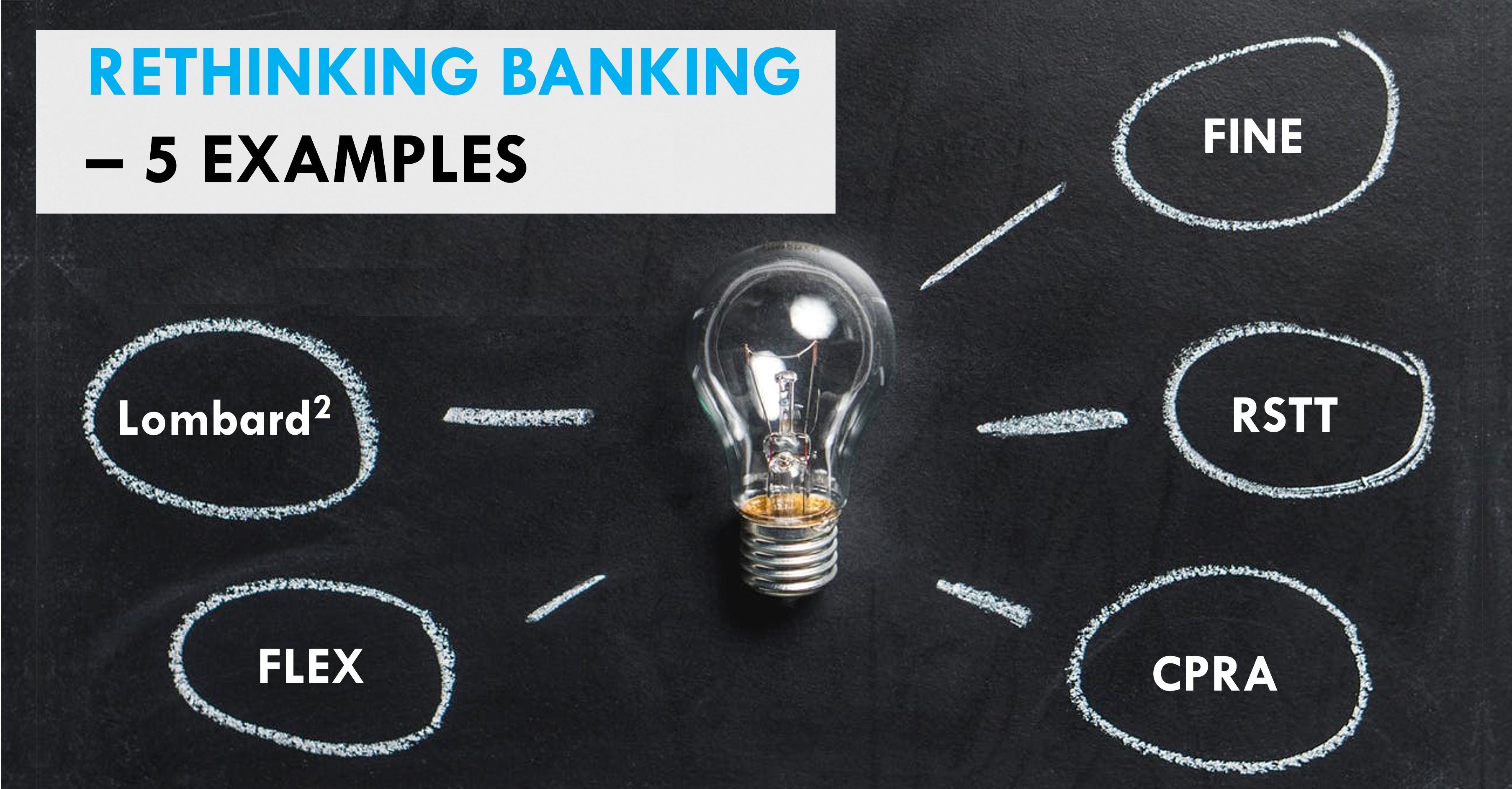5 Capilever software tools that radically rethink financial products from their core
17 May 2021
Pressurized by disruptive Fintechs and changing customer expectations, the banking landscape has drastically changed. Over the past 5 years, banking has been transformed from a risk-averse, very conservative sector to one of the fastest moving and innovating sectors in the world.
As such innovation can be found anywhere in banking, especially related to improving user experience, removing frictions (for example in customer onboarding or payments), embedding financial actions within end-to-end user journeys (see blog “Ecosystems – The key to success for all future financial services companies“) or offering new value-added services aimed at increasing buying power (see blog “Financial Optimization – Core business of a bank?“).
Unfortunately most of these evolutions focus on innovating the user interaction with the banking channels or with financial products or services, rather than improving the products or services themselves. For example for savings or current accounts, or even for investments or credits, the same underlying financial products can be found as 20 years ago. At Capilever, we believe there is a huge opportunity for banks and Fintechs to radically rethink financial products from their core. By redesigning these financial products, the key reason of people interacting with a bank can be improved, i.e. people will use banks more to outsource their financial worries and financial risks. Historically banks ensured that your money would not be stolen or lost and additionally they paid an interest on those deposits. Today, we expect that banks have gone a step further in improving the financial health management of their customers, but unfortunately this is not always the case. Actually with maximum guaranteed deposit caps and negative interest rates (or at least decreasingly negative buying power, when subtracting inflation from interest), the financial aspects a customer needs to consider have risen further.
Furthermore it’s still up to customers to carefully decide which money to put into their current, savings or investment accounts, or to choose the right credit product for financing their projects.
We believe banks should help their customers more in this financial health management and (at least partially) take over the management of different financial risks, like liquidity risk, interest-rate risk, counterparty risk, etc.
Not by adding a fancy layer on top, which allows to do simulations, predictions and recommendations, but by providing new financial products which take over this risk management, thanks to the intrinsic design of these financial products. Similar to what structured notes or capital-guaranteed funds do for market risk, but then preferably cheaper and more flexible.
An interesting article in this context is shared by Rik Coeckelbergs of The Banking Scene, i.e. “By Improving Financial Wellbeing, Banks Become Health Companies“. This article describes that stress (and its negative impact on health) and financial stress are strongly correlated. If a bank can reduce financial worrying and stress, it will ultimately help improve the customer’s health.
This evolution will lead to more personalized and more flexible financial products. As these financial products will inherently hedge certain financial risks, they provide a value-added service to the customer as they take away some of the financial follow-up and worrying. As such a higher commission can be asked, leading to higher revenues for the bank. This means a win-win situation for both parties.

More specifically we present new financial products for the following 3 domains:
- In the “Daily Banking” domain, the notion of an “Account” should be reconsidered. With interest rates on current and savings accounts being almost identical and with banks allowing to open multiple accounts at no cost, it is clear that the concept of an account is outdated. Instead customers should have only one account, in which a number of dynamic buckets are managed, allowing to dynamically allocate your money. These buckets represent a purpose for the allocated money, allowing to add rules (blocking or warning) to each bucket for its consumption. More details on these concepts can be found in the following blogs: blog “A bank account – A concept of the past“, blog “Can the digitalization of money provide more innovative monetary tools to governments?” or blog “Pre-paid cards – An outdated concept with a lot of innovative potential“.
Additionally banks should help their customers protect themselves from financial issues as a result of trusting the wrong person or company to do business with (the so called counterparty risk). Corporates have extensive due diligence processes for managing this risk, but as an individual the best you can do is a Google, Facebook or LinkedIn lookup. Capilever CPRA helps customers to get a better idea of the solvability, liquidity and trustworthiness of a third party (though consent), which is exactly how customers can be supported in a high-level assessment of another party. - In the “Credits” domain, it remains very difficult for people to choose the right credit product; and when a credit product is chosen the trade-off between flexibility and cost price is often very penalizing. As such banks should look for more flexible products, while keeping the risks for the bank and the cost price of the credit minimal. This is the domain where Capilever provides a number of innovative tools, like LABL offering a flexible, yet not too expensive credit based on the Credit Lombard principle, or FLEX allowing banks to provide a product to compensate for short- to medium-term budget fluctuations via a long-term contract combining a credit and investment leg. Furthermore Capilever FINE helps bank customers select the right credit product(s). Additional examples of innovations in the Credits domain can be found in blog “Are credits not too commoditized?“. A very nice and concrete example of another company trying to innovate credits is Perenna, which tries to innovate the house mortgage product.
- In the “Investments” domain, different hedging techniques should also be democratized, by making them simpler to the layman. This means avoiding the specific jargon of investments, but instead visualizing the different associated risks in a simple way, with options for auto-hedging them (fully or partially). This is the goal of Capilever RSTT.
A lot of opportunities exist for helping customers better manage their financial risks. As this is actually the core business of a bank, we believe this should be the key domain in which banks should invest and innovate in the coming years. The fancy bells and whistles, which might attract quite some press attention and curious prospects, can definitely be interesting in the right banking strategy, but ultimately will never generate the same amount of revenue as fundamentally optimizing the bank’s core product offering.

